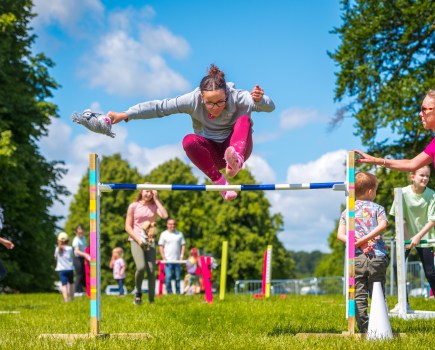Dengie Horse Feeds has teamed up with Essex Wildlife Trust’s Nature Neighbours campaign to encourage more people to make their yards, gardens and green spaces more wildlife friendly.
“Bees, butterflies, beetles, ants and many other bugs are busy pollinating flowers but also our food crops. Without them, our ability to produce food would be significantly impacted,” said a statement.
“Over the last year, the very wet weather has badly impacted numbers of pollinators and so it is vital we try to give them extra support in the coming months.
“There is more we can do at our stable yards and in our gardens or outside space, however small.”
Ideas of how you can do more to help pollinators thrive at your yard include:
Buy feeds containing alfalfa
Alfalfa, which flowers in the spring and summer, produces abundant floral nectar which is excellent forage for pollinators.
“As Dengie leave the alfalfa in the ground over winter, it also provides excellent winter ground cover for birds and insects,” said a spokesperson for the feed company. “Alfalfa is recognised worldwide as being a great habitat for an enormous diversity of insect species. Scientists have observed over 1000 species of insects living or feeding in alfalfa fields.”
Create a habitat pile
Making a stack of logs, fallen leaves, twigs, bark and other natural materials provide pollinators with somewhere to lay their eggs and adult butterflies with somewhere to hide.
Use a variety of different sized logs and natural materials like dry leaves, straw or grass cuttings as the foundation for the habitat pile. Ensure you stack the materials loosely so there are plenty of gaps for the insects to move about in.
Situate the habitat pile in a sheltered, semi-shaded spot ideally near a hedge, fence or shrubs so it is protected from extreme weather conditions. As the habitat pile naturally breaks down and decomposes, you can add more leaves, twigs or branches to replenish the pile.
Build a bug or bee hotel
Using items found around your home or yard such as twigs and old supplement tubs, you can provide a nesting site for bugs or bees.
“Building a bug hotel is easy and can be made out of items already found around the home or yard, such as twigs and old supplement tubs,” advise Dengie. “For those who aren’t handy with DIY, bug and bee hotels can also be purchased through nature discovery centres.”
To make your own:
- Create a frame using a sturdy wooden box or untreated wood. Ideally it should have a depth of at least 10-15cm.
- Fill the inside with hollow canes, bamboo or plant stems placed horizontally, logs or wood blocks, pinecones or dry leaves, straw hay or corrugated cardboard.
- Pack the materials tightly but ensure there is enough space for insects to crawl in and out.
- Hang your bug hotel at least 1cm off the ground to avoid dampness and ideally in a sunny sheltered spot.
Grow plants
Having a variety of autumn and/or winter pollinator-friendly plants will encourage pollinators to frequent your garden or yard and find welcome food sources during these difficult months.
Ivy, Michaelmas daisies, Bishop of Llandaff dahlias and strawberry trees are among those autumn plants that are popular with pollinators.
In winter, pollinators enjoy spotting winter heather, snowdrops, winter honeysuckle and crocuses.
Find out more about the Essex Wildlife Trust’s Nature Neighbours campaign here.










